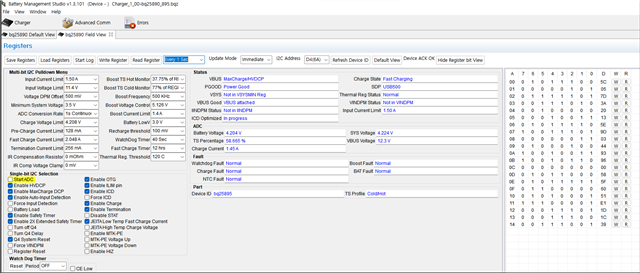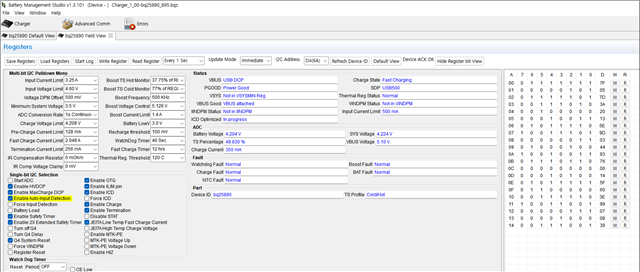Hi
I have many questions while using BQ25895.
1. What are the conditions for the charging current to set 5A?
2. When the battery is connected and LOAD is applied to the SYS, the BATTERY voltage drops as shown below.
Is it right that the battery voltage drops if load is applied to the sys?
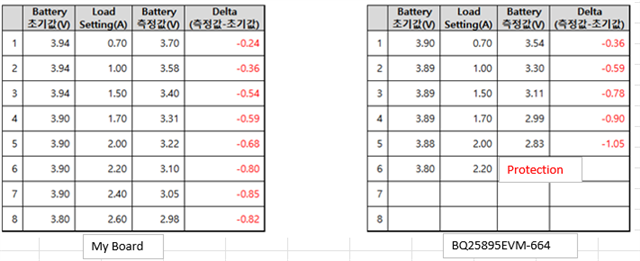
3. If only 9v is entered in the vbus and there is no D+, D-, it is set as below, is it correct?
The reason why D+,D- doesn't have any value is because it's supplied by wireless charging.
4. When charging with an adapter that supports MaxCharge, the limit is 11.3V and 1.5A , but the actual charge is 800mA.
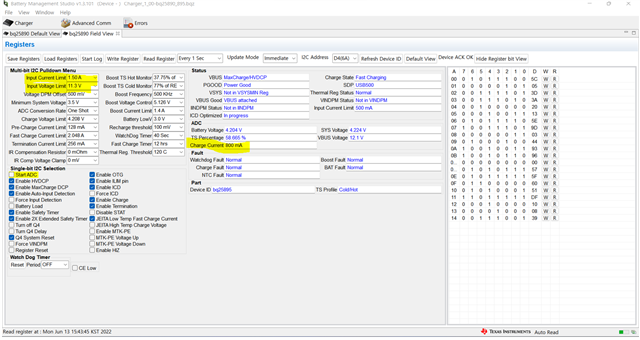
5. When charging with an unknown adapter , the limit is 4.5V and 3.25A , but the actual charge is 500mA.
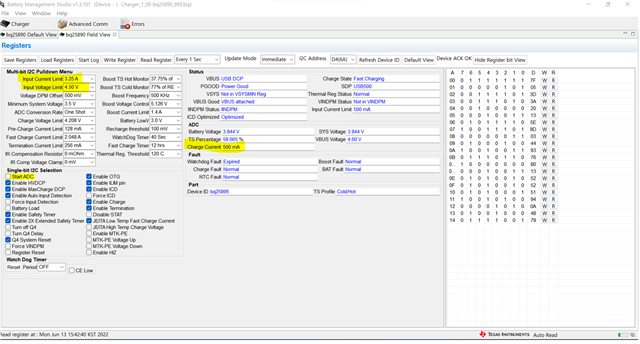
Thanks


